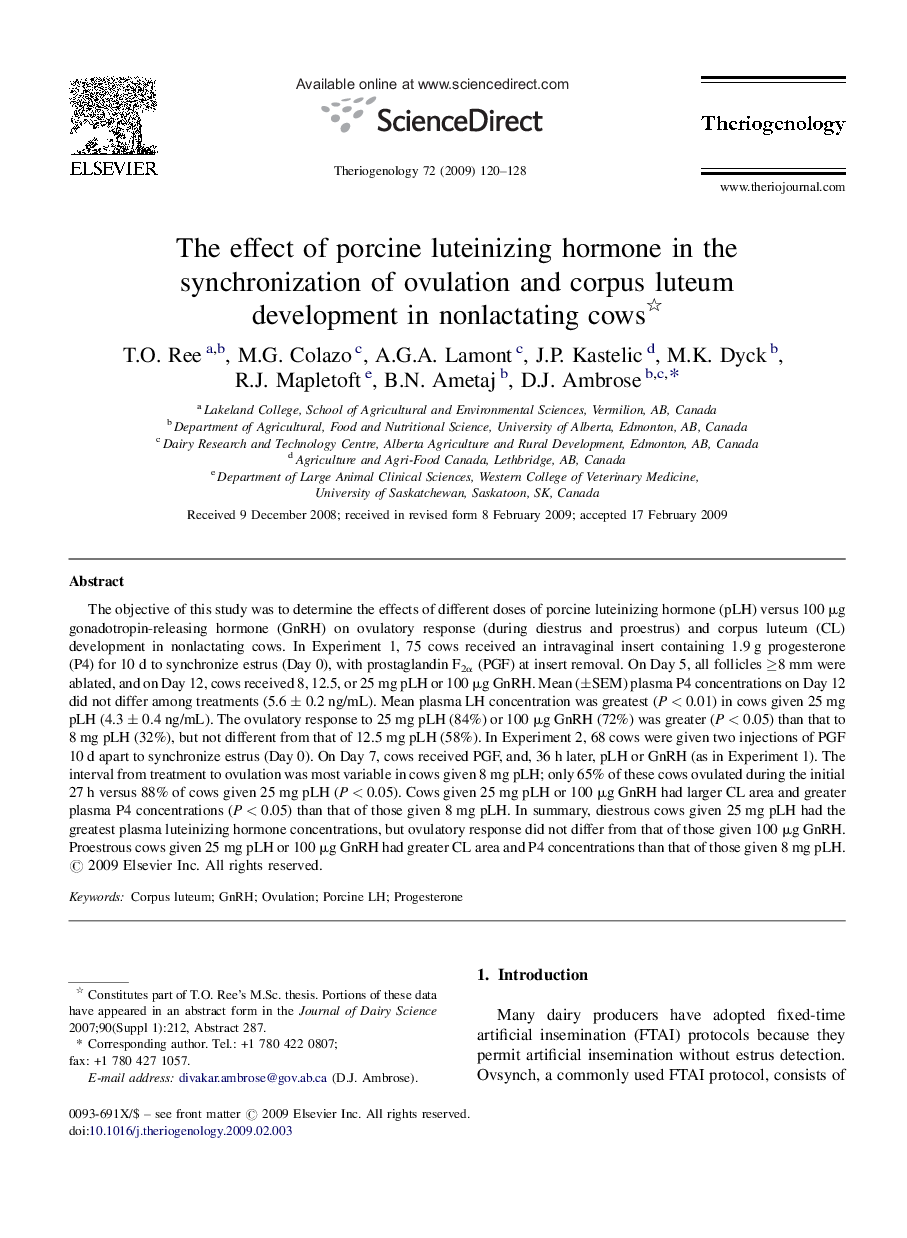| Article ID | Journal | Published Year | Pages | File Type |
|---|---|---|---|---|
| 2096004 | Theriogenology | 2009 | 9 Pages |
The objective of this study was to determine the effects of different doses of porcine luteinizing hormone (pLH) versus 100 μg gonadotropin-releasing hormone (GnRH) on ovulatory response (during diestrus and proestrus) and corpus luteum (CL) development in nonlactating cows. In Experiment 1, 75 cows received an intravaginal insert containing 1.9 g progesterone (P4) for 10 d to synchronize estrus (Day 0), with prostaglandin F2α (PGF) at insert removal. On Day 5, all follicles ≥8 mm were ablated, and on Day 12, cows received 8, 12.5, or 25 mg pLH or 100 μg GnRH. Mean (±SEM) plasma P4 concentrations on Day 12 did not differ among treatments (5.6 ± 0.2 ng/mL). Mean plasma LH concentration was greatest (P < 0.01) in cows given 25 mg pLH (4.3 ± 0.4 ng/mL). The ovulatory response to 25 mg pLH (84%) or 100 μg GnRH (72%) was greater (P < 0.05) than that to 8 mg pLH (32%), but not different from that of 12.5 mg pLH (58%). In Experiment 2, 68 cows were given two injections of PGF 10 d apart to synchronize estrus (Day 0). On Day 7, cows received PGF, and, 36 h later, pLH or GnRH (as in Experiment 1). The interval from treatment to ovulation was most variable in cows given 8 mg pLH; only 65% of these cows ovulated during the initial 27 h versus 88% of cows given 25 mg pLH (P < 0.05). Cows given 25 mg pLH or 100 μg GnRH had larger CL area and greater plasma P4 concentrations (P < 0.05) than that of those given 8 mg pLH. In summary, diestrous cows given 25 mg pLH had the greatest plasma luteinizing hormone concentrations, but ovulatory response did not differ from that of those given 100 μg GnRH. Proestrous cows given 25 mg pLH or 100 μg GnRH had greater CL area and P4 concentrations than that of those given 8 mg pLH.
